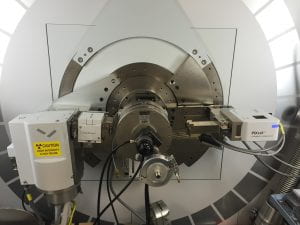Do you want to collect high-quality X-ray reflectometry data? Good practices that will help
X-ray reflectometry (XRR) is a well-established analytical method for the characterization of thin layered structures, surfaces and interfaces. It is used to determine layer thicknesses and densities and provides roughness-related information. The basics of XRR and the analysis of XRR data were discussed in a previous webinar. This time, the focus will be on a typical workflow, from setting up the X-ray optics of a diffractometer, the essential steps of the sample alignment procedures to the final XRR measurement.
Don’t miss the useful practices and tips that we will share with you in this webinar. They will help you to collect high-quality XRR data from your layered samples.
Webinar details
December 15, 2016
10:00am EDT New York or 4:00pm CET the Netherlands
More information can be found here.
Will be displayed on the main monitor in the lobby of the MCF in the Marcus Nanotechnology Building.

